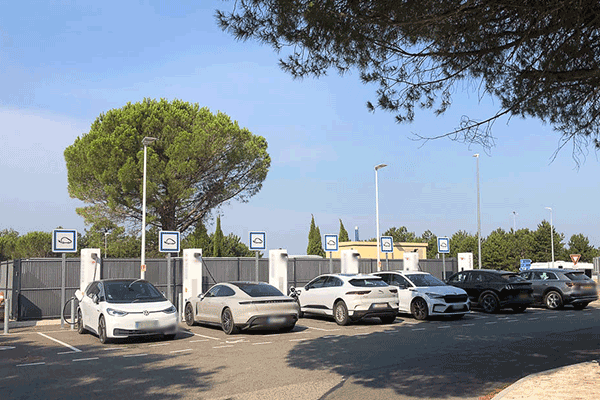Summer is just around the corner, and as the mercury rises, electric vehicle owners need to adapt their charging habits to ensure optimal performance and longevity of their beloved EVs. Warm weather can have an impact on the efficiency and lifespan of your EV’s battery, so it’s essential to be aware of some best practices for charging during the hot season. In this article, we will explore five essential tips for EV owners to make the most out of their summertime charging sessions.

Park and Charge in the Shade
As temperatures soar during the summer months, it’s essential to keep your EV cool while it’s charging. Parking and charging in the shade can help protect your battery from excessive heat, which can lead to faster degradation and reduced capacity. Whenever possible, choose a charging station with a canopy or one located in a shaded area. If that’s not feasible, consider using a reflective sunshade on your vehicle’s windshield to minimize the heat absorbed by your car’s interior and battery.
Charge During Cooler Hours
Charging your EV during the cooler hours of the day, such as early morning or late evening, can help maintain the health of your battery. High temperatures can cause increased resistance in the battery, leading to slower charging times and potential damage to the battery over time. By charging during cooler periods, you can help minimize heat-related stress on your battery and maintain optimal charging speeds.
Use a Timed Charging Schedule
Many modern EVs come equipped with a built-in timer function that allows you to set a charging schedule. By utilizing this feature, you can plan your charging sessions during off-peak hours when electricity rates are lower, and temperatures are cooler. Setting your EV to charge during the early morning or late-night hours can help you save on energy costs while ensuring your battery remains cool during the charging process.
Monitor Your Battery’s Temperature
Keeping an eye on your EV’s battery temperature is crucial during the hot summer months. Most electric vehicles have built-in battery temperature monitoring systems that provide real-time information on the battery’s temperature. Regularly checking this information can help you determine if your battery is overheating and if you need to take any preventive measures to avoid potential damage.
If your EV doesn’t have a built-in temperature monitoring system, consider investing in an aftermarket device that connects to your vehicle’s OBD-II port and provides real-time battery temperature data. This can help you make informed decisions about when and where to charge your vehicle, ensuring that your battery remains within safe operating temperatures.
Practice Moderate Driving Habits
Finally, adopting a more moderate driving style during the summer months can help reduce the strain on your EV’s battery. Aggressive acceleration, high-speed driving, and frequent rapid charging can all contribute to increased battery temperatures, which can negatively impact the battery’s health and performance. By practicing a smoother driving style and avoiding rapid charging whenever possible, you can help keep your battery cool and prolong its lifespan.
As the popularity of electric vehicles (EVs) increases, numerous new EV owners may observe that the process of charging and maintaining their vehicles bears resemblance to that of charging and maintaining their smartphones. On a sweltering day, if your phone is running multiple apps, it is generally prudent to shut down a few of them to allow your device to cool off. A similar concept applies to your EV.
Fortunately, the battery management system (BMS) and thermal management system in your EV work effectively in ensuring that the battery remains cool and functions optimally. SETEC POWER DC fast charger is designed to withstand extreme weather without all the problems that come with summer heat. If you want more information, please contact our !














